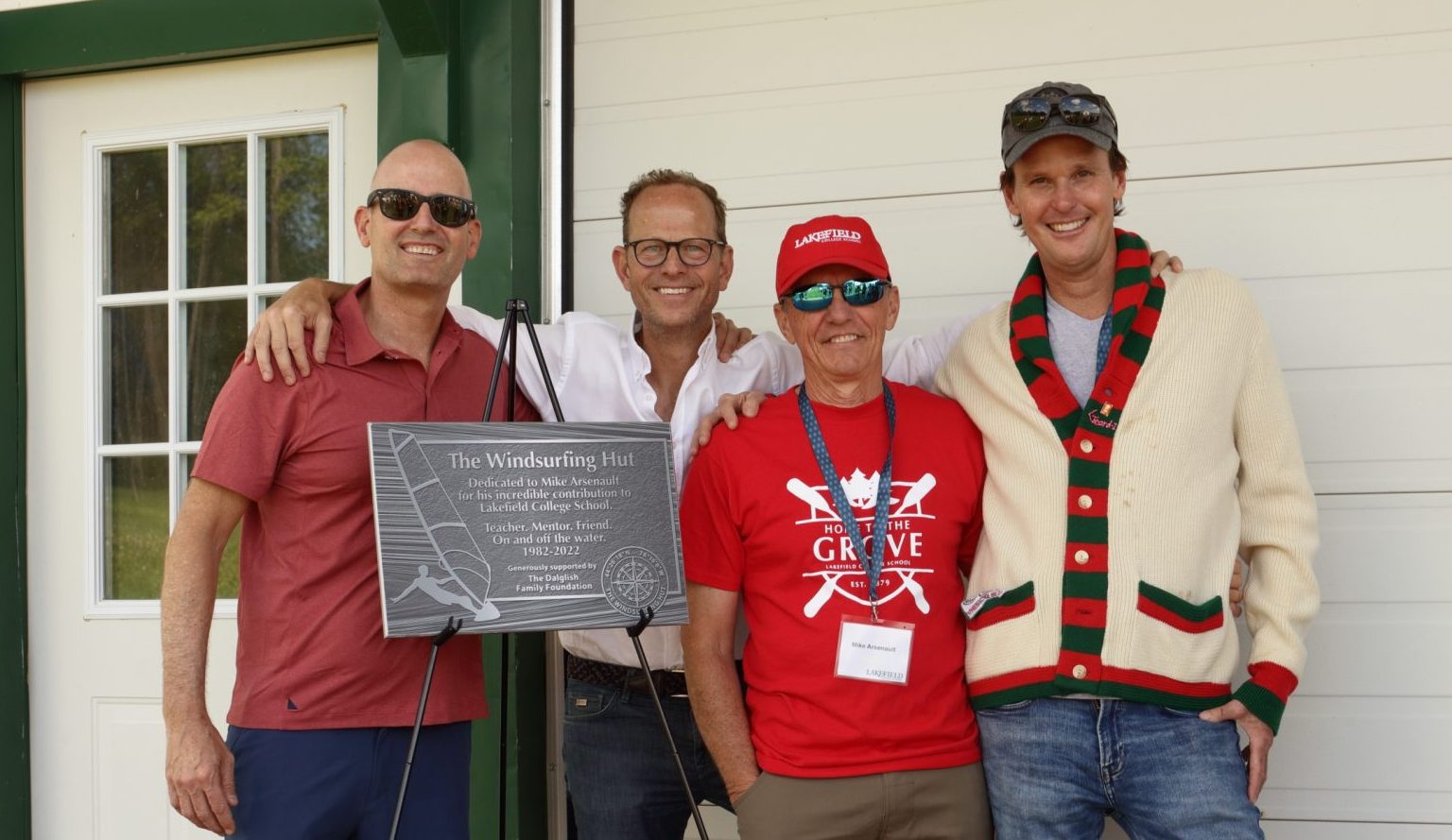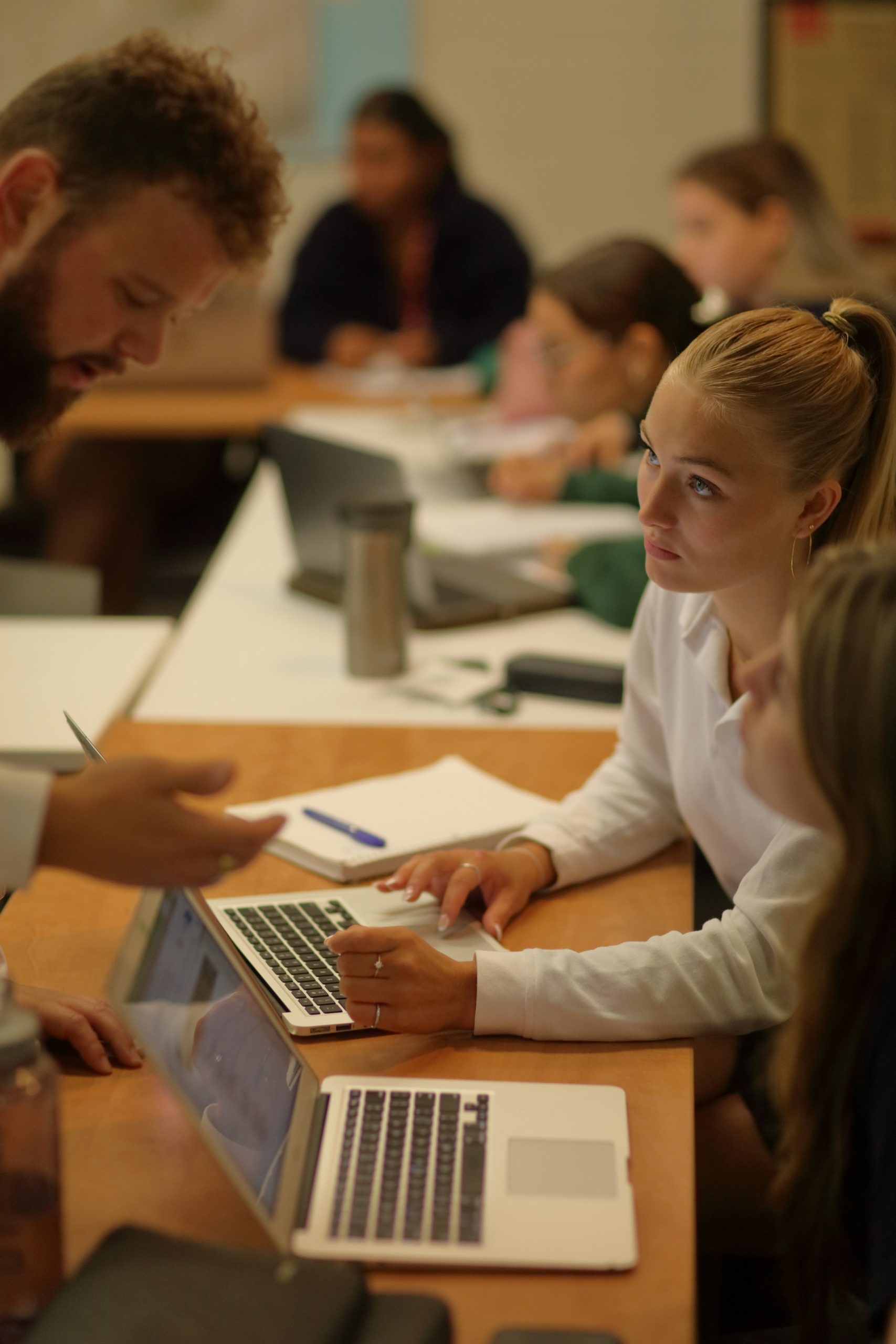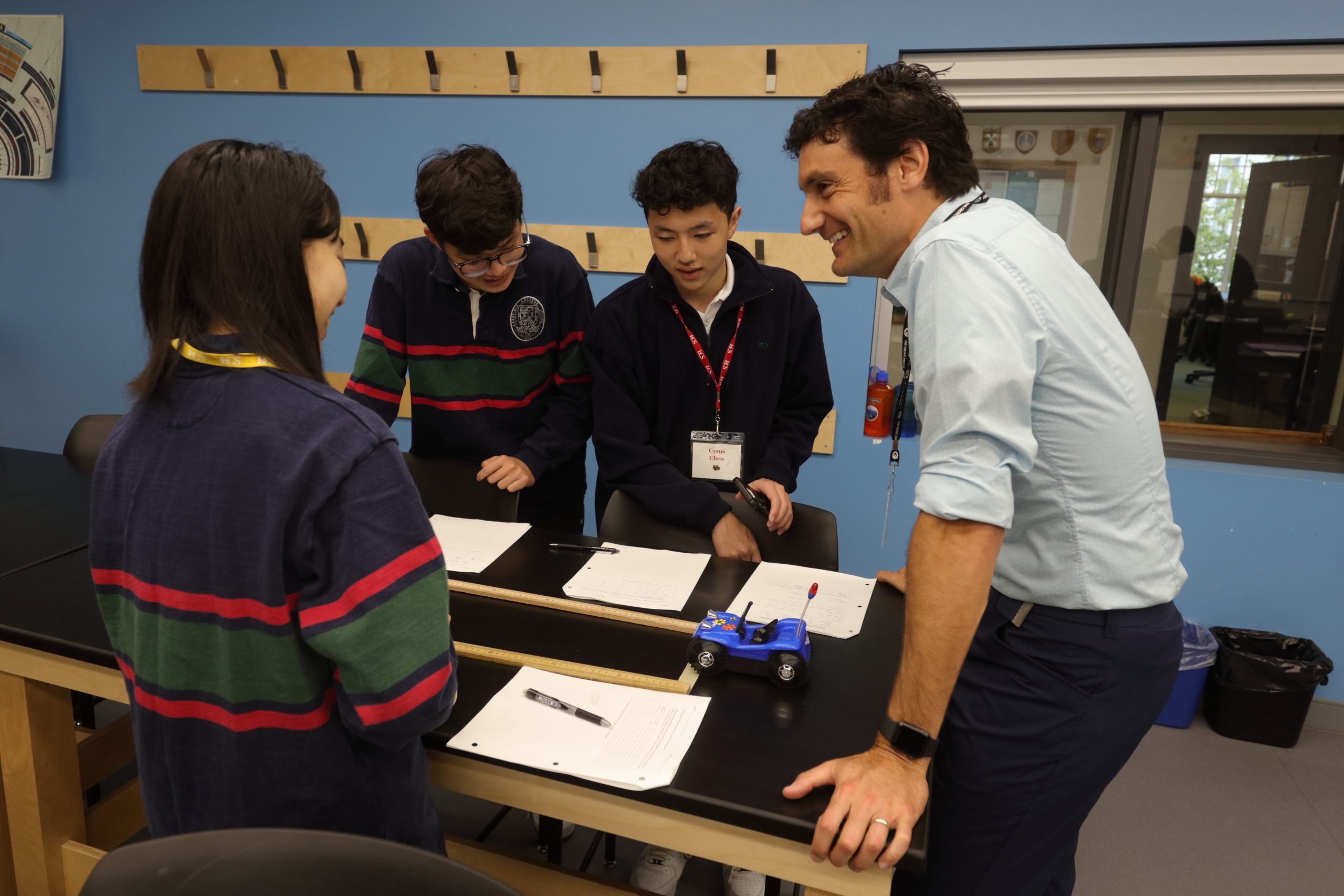
LCS faculty member Mike Arsenault P ’00 ’03 ’04 retired in June 2022 after forty years. Mike joined the school as a teacher in September of 1982 following correspondences with Headmaster Terry Guest earlier that spring. Committed to lifelong learning, Mike conducted research, published articles, and often drafted memos to school leadership regarding topics such as the Socialization of Young Adults and proposing a teacher purchase plan for computers. He taught Biology, Earth Science and Environmental Science, has led the Science and Technology department, and has been the Head of Brown House and Grove House. He mentored countless teachers new to the profession and fostered a love of science in many Grove students. Mike, a champion of windsurfing, not only developed this program at LCS, but also kept our students safe as the Director of Waterfront. Trying to include all that Mike has given to LCS in 40 years is not possible to do in four pages. Careers that span 40 years are not necessarily uncommon, but careers that span 40 years in one place are extraordinary. Mike has experienced so much throughout his expansive career at Lakefield College School and we were pleased to capture some of the lessons he’s learned after educating teenagers for over four decades.
You Have Something to Offer Every Student
When I first came to LCS, I thought there were two main kinds of students: those students whose parents had done everything they could to shape them into well-rounded adolescents and were looking for additional support and those who were already moulded into leaders with a range of skills and talents. We still get a mix, but now we also get a much wider range of kids with a variety of backgrounds. What I’ve learned over time is that it doesn’t matter where the student comes from or what life experience they have, I’ve always asked myself, “What does this teenager need the most to allow them to flourish?” Throughout my 40 years at LCS, I aimed to effect the changes necessary for each specific kid, based on the unique qualities and talents they brought with them.
“Capacity is about the size of your cup; the capacity of that particular vessel to contain what you are is small to start. My job is to increase the size of the vessel, to increase your capacity to do things.”
Teach the Individual, Not the Collective
I soon learned the value of teaching at an individual level, rather than teaching to the collective. We’re lucky at Lakefield to have a student-to-educator ratio that allows for deeper connections and more individualized teaching. I’ve seen this student-centered approach have a great impact on our pupils’ abilities to grasp course concepts and really engage with the material in a meaningful way. It’s so important to know each student and understand who they are and what their wants and desires are. When I know my students, I can teach in a way that resonates with them such that they see the value of the lesson beyond just earning a high school credit. They begin to see the greater picture of how the skills and learning strategies they develop, whether in a Biology class or in a Dance class, can help them throughout their lives.
It’s Important to Foster the Essential Qualities of a “Good” Human
One question with which I anchored so many of my interactions with students was, “What are the essential components of a ‘good’ human?” Every day, I tried to remind myself that intellectual, emotional, physical, and spiritual development are the key ingredients to a well-rounded, genuine person. The next question I would ask myself was “How can I go about nurturing those things?”
At Lakefield, I think we do a pretty good job of helping students develop in each of those areas. This speaks to the talents of our staff, because in order to develop a multi-faceted multi-skilled teenager, our teachers and staff members take advantage of the real teachable moments, beyond the classroom, to have a widespread impact. This means fostering the best qualities in our students—kindness, integrity, generosity, empathy—in the smallest moments every single day.
Teaching is an Artform
 Books, paintings, and theatrical productions are all commonly recognized as the products of artistic composition. Teaching, however, is also an art; one that took me many years to master and truly understand. It became obvious to me when we began teaching virtual classes during the pandemic that there is a craft to teaching; a spark that ignites between the learner and the teacher that allows information to come to life.
Books, paintings, and theatrical productions are all commonly recognized as the products of artistic composition. Teaching, however, is also an art; one that took me many years to master and truly understand. It became obvious to me when we began teaching virtual classes during the pandemic that there is a craft to teaching; a spark that ignites between the learner and the teacher that allows information to come to life.
When the world drastically shifted to a digital environment in 2020, we were all asked to dramatically change the way we delivered our classroom lessons. I realized, at that time, that there’s a tight feedback loop that exists in an in-person classroom dynamic. That feedback loop is something I took for granted before I knew it was such a precious part of the learning dynamic. Magic comes from students delivering feedback, whether it be verbal in the form of questions or chatter amongst themselves, or non-verbal (shifting in their seat, giving a puzzled expression, or exchanging wide-eyed looks with their classmates). All of this information is critical for me to gauge how they are receiving the ideas in that moment and what gears I need to shift to ensure everyone is on the same proverbial track.
Safety is Key for Success
We are feeling beings who think, we are not thinking beings who feel. As soon as I understood that concept, every interaction that I had needed to underpin that perspective. I know that if a student opens up to me in some sort of vulnerable fashion, they need to know they are safe in doing so. I also know that if I do anything to compromise that safety, they’re going to shut down, and it’s going to take much longer for them to let me in and for us to hit critical learning thresholds.
It’s also important to acknowledge that each student comes to Lakefield with a sort of protective armour. For some students, it’s like a soft shell that cracks with gentle maneuvering; for others, it’s a thick wall that insulates them from the rest of the community. One way to help break that armour is to ensure that school is a safe space where they know they can express themselves and still be treated with kindness and respect.

Whenever the opportunity presented itself, I tried to model and encourage the values we hold as a school. If I saw an interaction between students that was outside of our value set, I addressed it. But, I would never do it in a way that embarrassed the student because that would fracture safety. I aimed to bring the issue back to who we were as a collective and get them thinking on the same wavelength: “this is who we are; this is what we’re trying to do; there are a thousand ways to do this; how are we going to do it together?” In other words, we looked at what we wanted to achieve, together, and then discussed the best approach. That perspective-taking can happen at any time, any place, and anywhere.
One of the Heads of School years ago used to say “adventure builds character, so we do lots of adventurous things.” But that was deepened for me when someone else said “it’s not adventure that builds character, adventure reveals character.” And that made me realize I need to understand where students’ comfort levels are before I can push them to the edge. That’s another way of keeping students safe; they know they’ll be pushed but they also know we won’t push them so far such that they’re treading to keep their head above water (figuratively speaking, of course; we are an Outdoors Every Day school, after all!).
Genuine Care is Crucial
Showing deep and genuine care is—and has to be—a component of how you gain trust and engage with students. In any one year, I had direct interaction with about a third of the school. That’s a lot of people who I had to have a “read” on and understand. But, it’s important to get to know everyone. It matters when you show a student you care, especially when you know them well enough to acknowledge when they’ve made improvements, academically, socially, and athletically. Being seen by another human is powerful; it’s a superpower when you can do that, really.
Fortunately, teens can’t sink into the background here. They can’t hide. The network of support we build around students— Advisors, Heads of House, Guidance Counsellors, Associate Faculty, Coaches, and Teachers—ensures that no one can slip through the cracks. And when you can’t hide, you have to be who you are.
Advice for New Teachers
Understand the Student Experience
One of the enduring pieces of advice I received in my first year as a teacher was “find ways to experience what students experience”. As a new teacher, I shifted from directing students to empathizing with what they’re going through. When you know that, you can adjust yourself and your behaviour accordingly. As a teacher, you always have an agenda but know that your agenda needs to be tempered by where the students are in the moment, intellectually and emotionally.
Be Yourself
Be yourself. You can’t be your favourite book character or your favourite mentor, you can only be you. Students will see through any facade you put up because what they want most is the true, honest version of you. When you can be yourself in the classroom, students learn that they can be themselves, too.
Take on Alternative Perspectives
I needed a lot of different perspectives. It was important for me to get to know every level of the organization, not just my colleagues. Get to know the people that help make the school run on a day-to-day basis. If you don’t have a pulse of what’s going on around the place, you’ve lost a lot. You don’t have all the components necessary to shift what you do in the classroom based on what the student experience is at that point in time.
Focus on the Student—Not the Ego
I’ve mentored some very strong teachers in the past and while I know that part of our desire is to show our prowess, I always gave my mentees a difficult reminder: it’s really not about you, it’s about the student. If there’s another adult in the room, new teachers often want to impress that adult. But that’s not the focus. The focus is on supporting the intellectual, emotional, and spiritual development of everyone in the room. Part of that is subjugating your own ego. In fact, I don’t believe ego has any place in a school. When that begins to dissipate, authentic learning and connection-building happen. I think part of being able to let your ego dissolve is to share the student experience.
Stay Curious
Spend time in vastly different subject areas. Though I’m a teacher and I spent a lot of time mastering my subject areas, I also read materials from outside of my discipline. Exploring information outside of my area of specialty allowed me to take great ideas from others and implement them into my own practice. My aim is to constantly learn and develop new skills, to always be willing to take on new challenges.
Reach Out
Reach out. Bounce ideas off other people as much as possible. Apart from constantly reading, I would seek out individuals in very different disciplines to find out what they’re doing. Seeing and knowing how professionals in other fields, such as the world of business where constant learning is a necessity, allowed me to seek out new ideas and find ways to reinvigorate
In May 2022, The Windsurfing Hut at Lakefield College School was dedicated to Mike Arsenault. The dedication reads: “Dedicated to Mike Arsenault for his incredible contribution to Lakefield College School. Teacher. Mentor. Friend. On and off the water. 1982-2022.”
Written by: Elise Moore
Excerpt from The Grove News 2021/22
